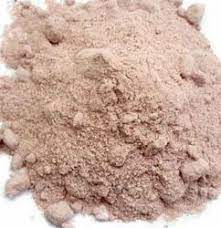High-grade fire clays can withstand temperatures of 1,775 °C (3,227 °F), but to be referred to as a "fire clay" the material must withstand a minimum temperature of 1,515 °C (2,759 °F).[2] Fire clays range from flint clays to plastic fire clays, but there are semi-flint and semi-plastic fire clays as well. Fire clays consist of natural argillaceous materials, mostly Kaolinite group clays, along with fine-grained micas and quartz, and may also contain organic matter and sulphur compounds. Fire clay is resistant to high temperatures, having fusion points higher than 1,600 °C (2,910 °F); therefore it is suitable for lining furnaces, as fire brick, and for manufacture of utensils used in the metalworking industries, such as crucibles, saggars, retorts and glassware. Because of its stability during firing in the kiln, it can be used to make complex items of pottery such as pipes and sanitary ware.
- Call us now : +91 9928075573
- Mail us : info@thejodhpurminetech.com
Fire Clay
FIRE CLAY

